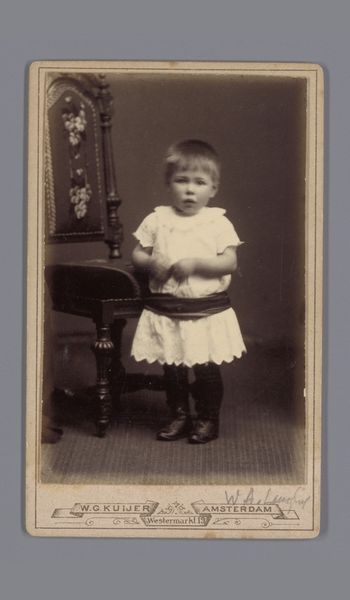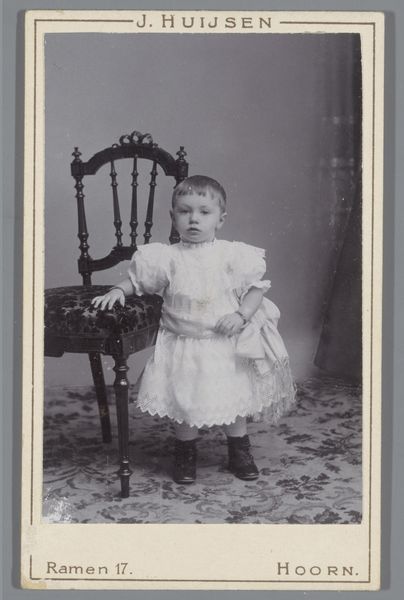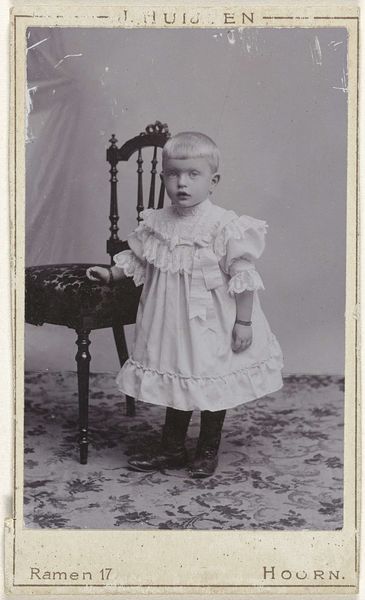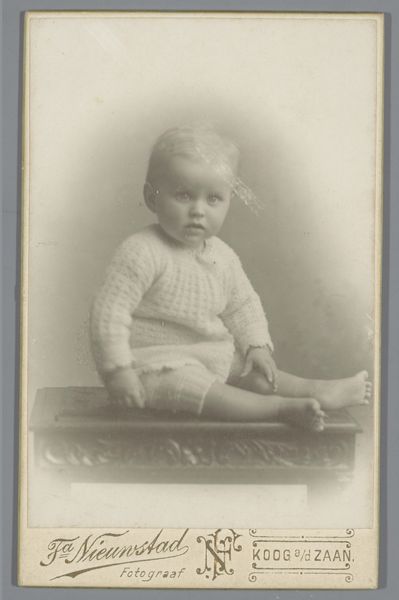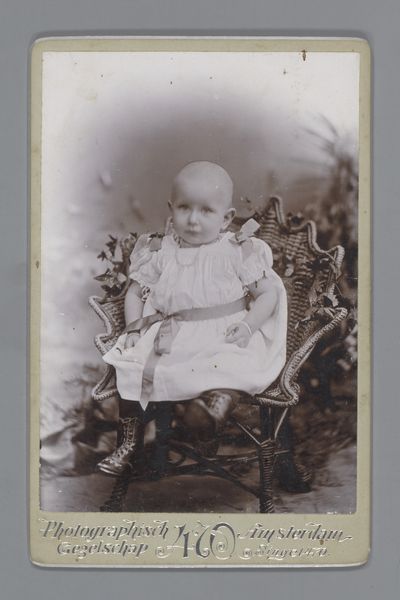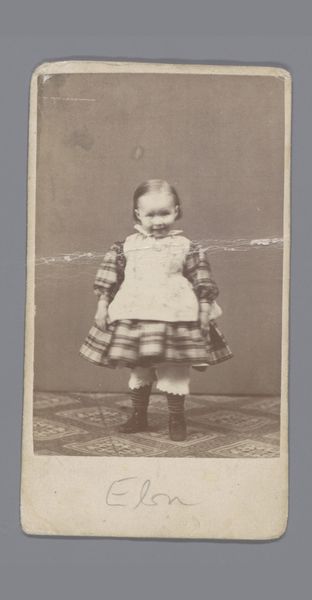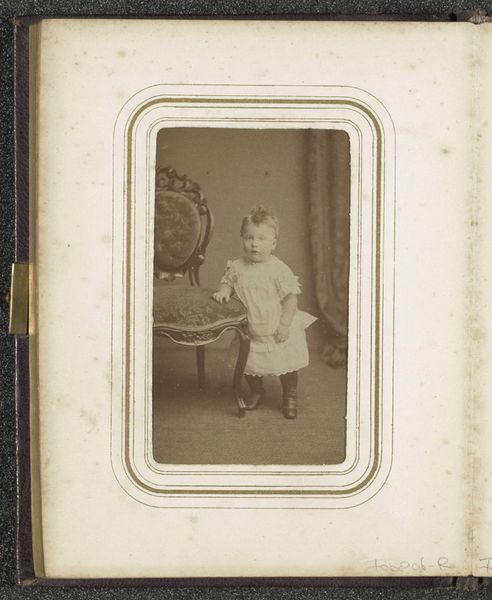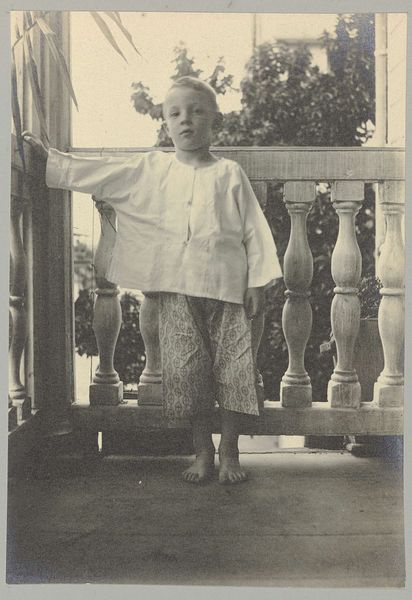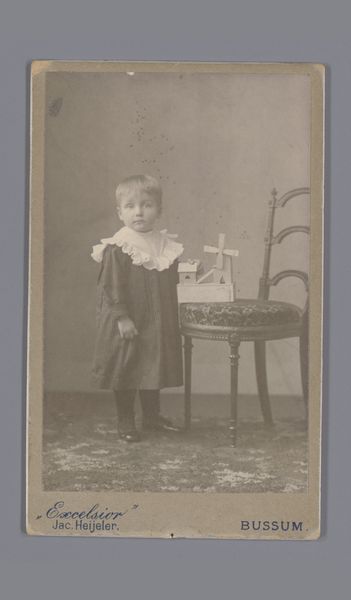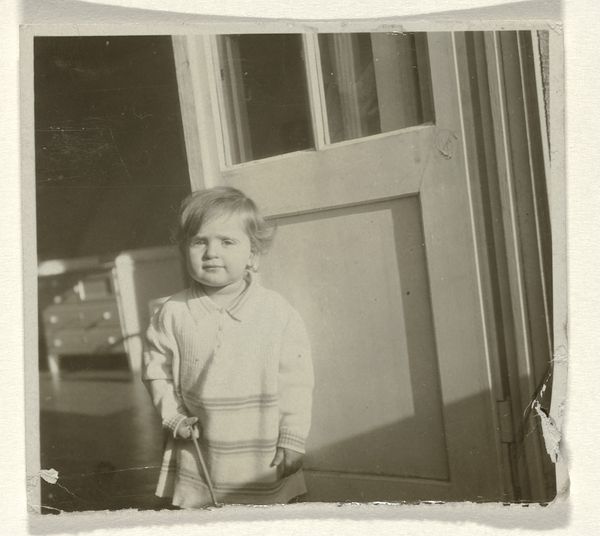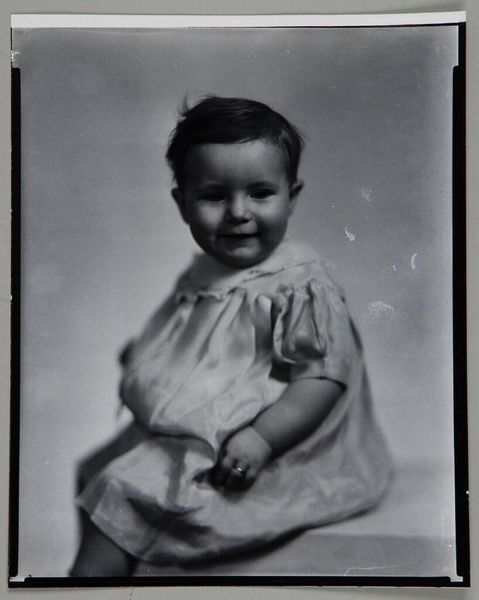
photography, gelatin-silver-print
#
portrait
#
photography
#
historical photography
#
gelatin-silver-print
#
realism
Dimensions: height 82 mm, width 54 mm, height 102 mm, width 62 mm
Copyright: Rijks Museum: Open Domain
Editor: This gelatin silver print, titled "Portret van Aafje Beets," was created around 1912 by Johannes Laurens Theodorus Huijsen. It's such a formal and yet innocent image of a young child with her toy stroller. What stands out to you most in this portrait? Curator: I see a fascinating intersection of social status, gender, and photographic technology at play here. This photograph speaks to the rise of photography as a means of memorializing childhood, especially within middle-class and upper-class families. Notice how Aafje is positioned – not quite candid, but not entirely posed either. The detailed lace dress and the ornate stroller – how do they reflect the social expectations placed upon young girls even at this early age? Editor: They definitely give off a sense of privilege. And the serious expression on her face – almost like she understands the weight of those expectations? Curator: Precisely! It prompts us to consider the subtle ways societal norms are imprinted upon children. The photographic medium itself was also evolving. What impact does the black-and-white gelatin silver print have on shaping our understanding and emotional reaction to this image today? Editor: The monochrome definitely adds to that feeling of historical distance, almost making her seem like a character from a story. Curator: And consider that even in its time, this image would be filtered through a certain photographic language – one that valued formality, posed portraits. Photography, despite its supposed objectivity, has always been deeply enmeshed with subjectivity and power. By understanding its origins, we can decode the ideologies present within these portraits. It's a window to understanding social structures that linger today. Editor: I never considered how much a simple portrait could reveal. Thank you. Curator: It's through critical engagement like this that art truly speaks to us, offering a dialogue between then and now.
Comments
No comments
Be the first to comment and join the conversation on the ultimate creative platform.
